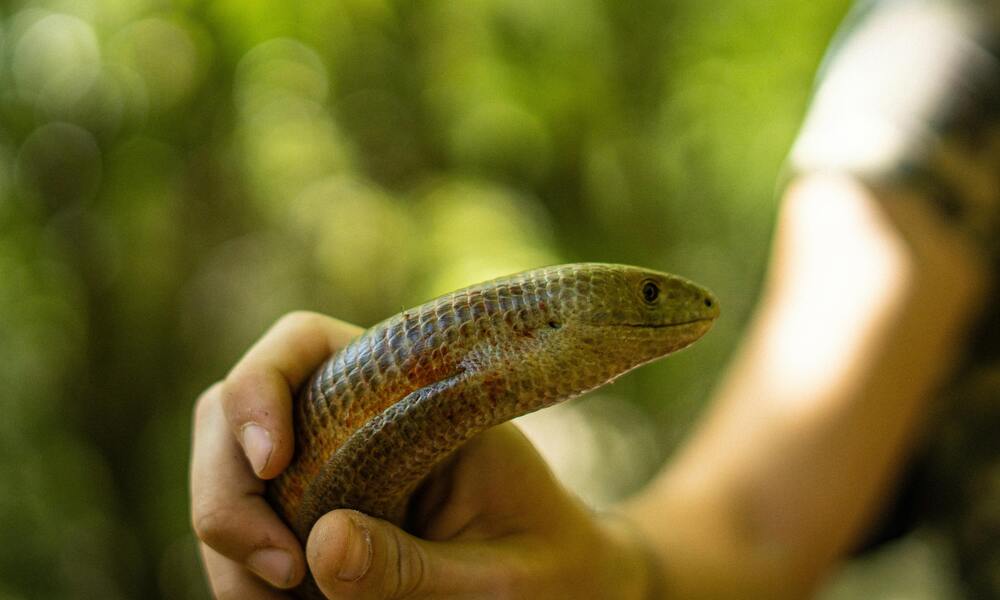Reptiles are fascinating pets. They come in many shapes and sizes, from tiny geckos to large snakes and turtles. Owning a reptile can be a wonderful experience, but handling them requires special care. Unlike cats or dogs, reptiles have different needs and behaviors. This guide will help you understand how to safely interact with your reptile pet.
Understanding Your Reptile’s Behavior
Every reptile species has unique behaviors. Some reptiles, like bearded dragons, enjoy human interaction, while others, like certain snakes, may be more solitary. Learning about your specific reptile’s behavior is crucial. Spend time observing your pet. Notice when it seems calm and when it appears stressed. This will help you know the best times to handle it.
Creating a Safe Environment
Before handling your reptile, make sure its environment is safe. The enclosure should be secure and clean, with the right temperature and humidity levels. This makes your pet feel comfortable and reduces stress. Ensure there are no hazards around that could harm your reptile when you take it out of its enclosure.
Washing Your Hands
Always wash your hands before and after handling your reptile. Reptiles can carry bacteria like Salmonella, which can be harmful to humans. Washing your hands with soap and warm water helps prevent the spread of germs. This is important for both your safety and the health of your pet.
Gentle Handling Techniques
When picking up your reptile, be gentle. Support its body properly. For lizards, place one hand under the chest and use the other hand to support the tail. For snakes, support the body with both hands. Never grab your reptile by the tail, as this can cause injury. Move slowly and avoid sudden movements that can startle your pet.
Recognizing Stress Signals
It’s important to know the signs of stress in your reptile. Common signs include hissing, biting, or trying to escape. If your reptile shows any of these signs, it’s best to put it back in its enclosure and try again later. Respect your pet’s boundaries to build trust over time.
Interacting During the Day
Reptiles are cold-blooded and need warmth to be active. The best time to handle your reptile is during the day when it’s warm and alert. Handling a reptile when it’s too cold can make it sluggish and more prone to stress.
Avoiding Overhandling
While it’s important to handle your reptile to build trust, overhandling can be stressful. Limit handling sessions to 10-15 minutes at a time. Give your reptile breaks between sessions to rest and feel secure in its environment. This balance helps keep your pet healthy and happy.
Special Care for Different Species
Different reptiles have different handling needs. Here are some tips for a few popular species:
- Bearded Dragons: These lizards are generally friendly and enjoy interaction. Support their whole body and let them climb on you.
- Leopard Geckos: Handle them gently and avoid sudden movements. They are delicate and can get stressed easily.
- Snakes: Support their body with both hands and let them move freely. Avoid handling them after they have eaten, as this can cause regurgitation.
- Turtles and Tortoises: Hold them with both hands, supporting the shell. Never flip them over, as this can be harmful.
Supervised Handling
Always supervise children when they are handling reptiles. Teach them the proper techniques and explain the importance of being gentle. This helps prevent accidents and ensures a positive experience for both the child and the reptile.
Providing Enrichment

Handling is a form of enrichment for your reptile. It helps them stay active and engaged. Additionally, you can provide other forms of enrichment, such as climbing branches, hiding spots, and safe toys. This keeps your reptile mentally stimulated and healthy.
Regular Health Checks
Handling your reptile gives you the opportunity to check its health. Look for signs of illness, such as changes in skin color, weight loss, or unusual behavior. Regular health checks help you catch any issues early and seek veterinary care if needed.
Building a Bond
Building a bond with your reptile takes time and patience. Start with short handling sessions and gradually increase the time as your pet becomes more comfortable. Speak softly to your reptile and move slowly. Over time, your reptile will learn to trust you and may even look forward to your interactions.
Understanding Shedding
Many reptiles shed their skin as they grow. During shedding, your reptile may be more sensitive and less willing to be handled. Give your pet space during this time. Ensure the enclosure has the right humidity to help with the shedding process.
Feeding and Handling
Avoid handling your reptile right after feeding. Reptiles need time to digest their food. Handling too soon after a meal can cause stress and lead to regurgitation. Wait at least 24 hours after feeding before handling your reptile.
Seasonal Changes
Some reptiles are affected by seasonal changes. For example, some species may become less active in winter. Adjust your handling schedule based on your reptile’s seasonal behavior. Respect their natural rhythms to keep them healthy and happy.
Handling New Reptiles
When you bring a new reptile home, give it time to adjust to its new environment before handling it. This can take a few days to a few weeks. Let your reptile explore its enclosure and get used to its surroundings. Gradually introduce handling once it seems comfortable.
Handling Injuries
If your reptile is injured, handle it with extra care. Support the injured area and minimize movement. Seek veterinary care immediately for any serious injuries. Regularly check your reptile’s enclosure for any hazards that could cause injuries.
Interaction with Other Pets
Be cautious when introducing your reptile to other pets. Dogs and cats may see reptiles as prey. Always supervise interactions and keep your reptile in a secure enclosure when not handling it. This ensures the safety of both your reptile and other pets.
Transporting Your Reptile
If you need to transport your reptile, use a secure carrier. Ensure the carrier has proper ventilation and a comfortable temperature. Avoid handling your reptile during the trip to minimize stress. Once you reach your destination, let your reptile settle before handling it again.
Enjoying Your Reptile
Handling your reptile can be a rewarding experience. It allows you to build a bond and better understand your pet’s unique personality. By following these tips, you can ensure safe and enjoyable interactions with your reptile.
Conclusion
Handling your reptile requires patience, care, and understanding. By creating a safe environment, recognizing stress signals, and using gentle handling techniques, you can build a strong bond with your pet. Remember to wash your hands, avoid overhandling, and provide enrichment to keep your reptile healthy and happy. With time and practice, handling your reptile will become a natural and enjoyable part of your routine.
FAQs on Handling Your Reptile
How often should I handle my reptile?
Handle your reptile 2-3 times a week, for 10-15 minutes each session, to build trust without causing stress.
Can I handle my reptile after it eats?
No, wait at least 24 hours after feeding to handle your reptile to avoid stress and regurgitation.
How do I know if my reptile is stressed?
Signs of stress include hissing, biting, and trying to escape. If you notice these, put your reptile back in its enclosure.
What should I do if my reptile is shedding?
Give your reptile space during shedding and ensure proper humidity in the enclosure to aid the process.
How should I pick up my reptile?
Use gentle, slow movements. Support its body properly: one hand under the chest and the other supporting the tail for lizards, and both hands for snakes.
Is it safe for children to handle reptiles?
Yes, with supervision. Teach children proper handling techniques and the importance of being gentle.
Can reptiles recognize their owners?
While reptiles may not recognize owners like dogs or cats, they can become accustomed to your presence and handling over time.
How do I transport my reptile safely?
Use a secure carrier with proper ventilation and a comfortable temperature. Avoid handling during transport to reduce stress.
What should I do if my reptile is injured?
Handle with care, support the injured area, and seek veterinary care immediately.
How can I provide enrichment for my reptile?
Offer climbing branches, hiding spots, and safe toys. Handling also serves as enrichment, keeping your reptile mentally stimulated.




